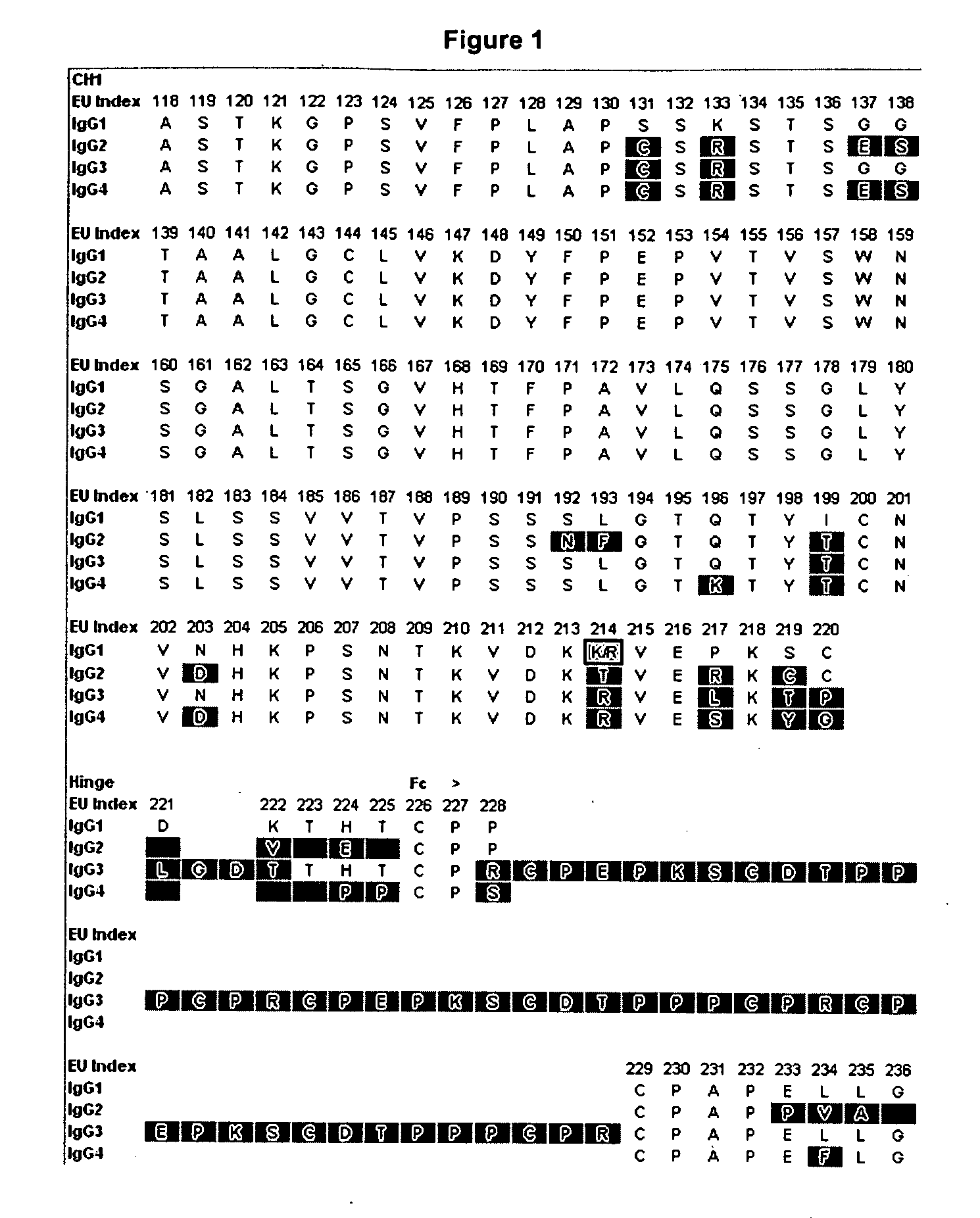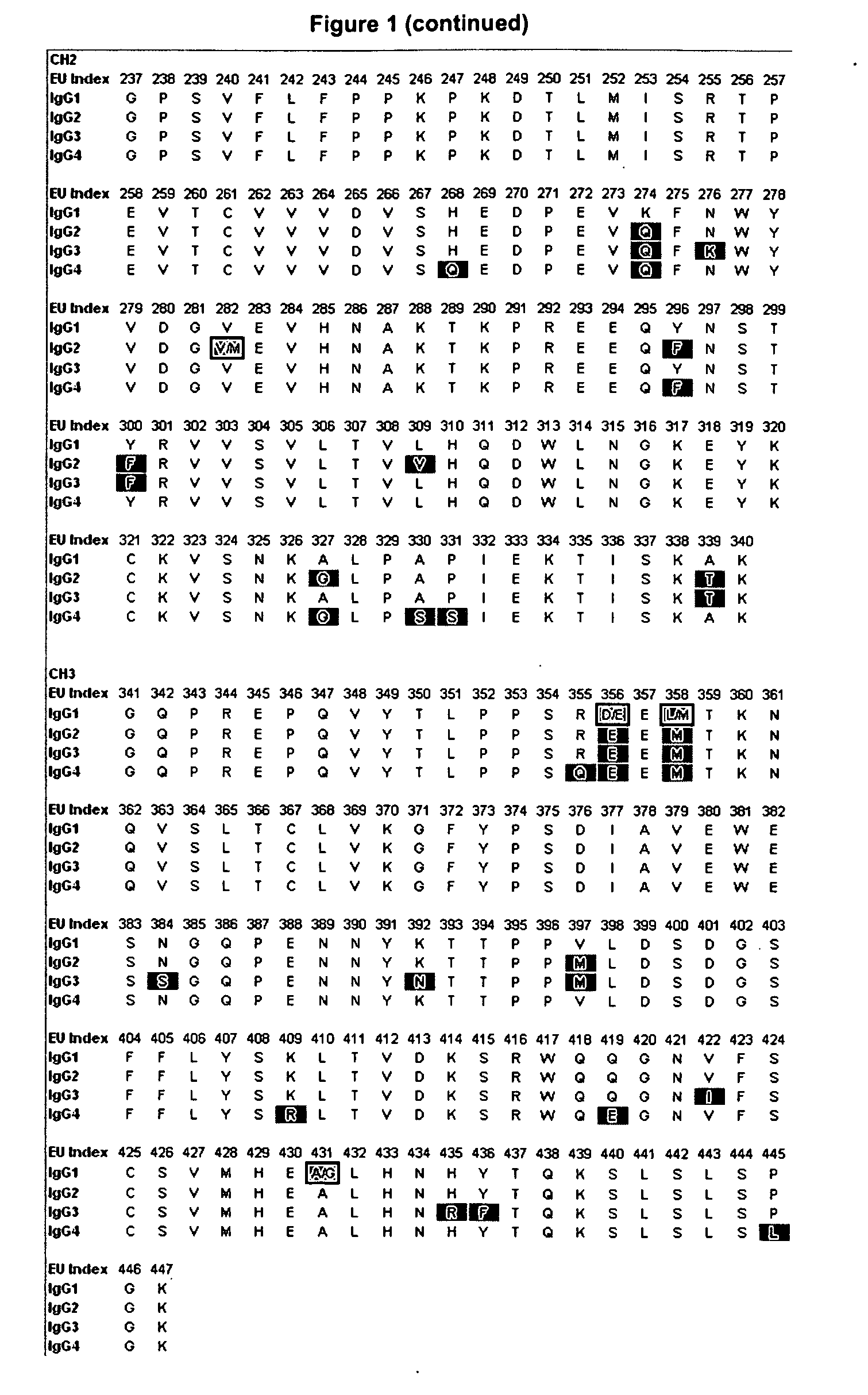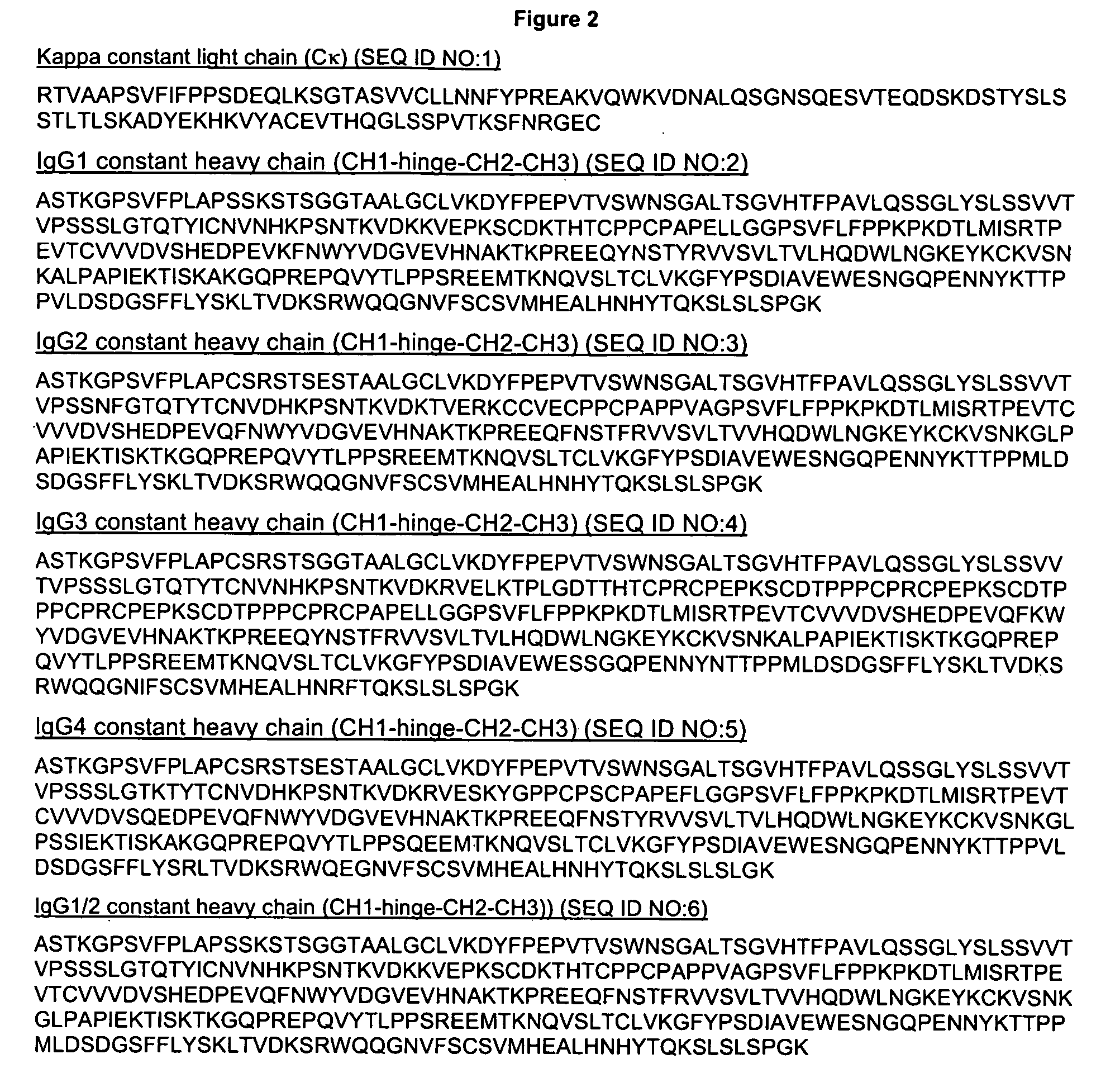Fc VARIANTS WITH ALTERED BINDING TO FcRn
a variant and binding technology, applied in the field of optimizing igg immunoglobulin variants, can solve the problems of limiting the ability to transfer characteristics from one homolog, identifying optimal mutations, and enhancing in vivo half-life, and achieve the effect of increasing the half-life of antibodies or immunoadhesins
- Summary
- Abstract
- Description
- Claims
- Application Information
AI Technical Summary
Benefits of technology
Problems solved by technology
Method used
Image
Examples
example 1
DNA Construction, Expression, and Purification of Fc Variants
[0188]Amino acid modifications were engineered in the Fc region of IgG antibodies to improve their affinity for the neonatoal Fc receptor FcRn. Variants were screened in the context of a number of different human IgG constant chains (FIG. 2), including IgG1, IgG2, and a hybrid IgG sequences that contains the CH1 and upper hinge of IgG1 and the Fc region of IgG2. It will be appreciated by those skilled in the art that because of the different interactions of the IgG1 and IgG2 Fc region with FcγRs and complement, these different parent Fc regions will have different FcγR— and complement-mediated effector function properties. Exemplary sequences of Fc variants in the context of these parent IgG constant chains are shown in FIG. 3.
[0189]Fc variants were engineered in the context of an antibody targeting vascular endothelial factor (VEGF). The heavy and light chain variable regions (VH and VL) are those of a humanized version o...
example 2
Fc Variant Antibodies Maintain Binding to Antigen
[0192]The fidelity of the expressed variant antibodies was confirmed by demonstrating that they maintained specificity for antigen. VEGF binding was monitored using surface plasmon resonance (SPR, Biacore), performed using a Biacore 3000 instrument. Recombinant VEGF (VEGF-165, PeproTech, Rocky Hill, N.J.) was adhered to a CM5 chip surface by coupling with N-hydroxysuccinimide / N-ethyl-N′-(−3-dimethylamino-propyl) carbodiimide (NHS / E DC) using standard methods. WT and variant antibodies were injected as analytes, and response, measured in resonance units (RU), was acquired. The dissociation phase was too slow to measure true equilibrium constants, and so relative binding was determined by measuring RU's at the end of the association phase, which should be proportional to the protein concentration (which is held constant in the experiment) and the association rate constant. The data (FIG. 6) show that the variant anti-VEGF antibodies mai...
example 3
Measurement of Binding to Human FcRn
[0193]Binding of variant antibodies to human FcRn was measured at pH 6.0, the pH at which it is naturally bound in endosomes. Vectors encoding beta 2 microglobulin and His-tagged alpha chain genes of FcRn were constructed, co-transfected into 293T cells, and purified using nickel chromatography. Antibody affinity for human FcRn (hFcRn) at pH 6.0 was measured on a Biacore 3000 instrument by coupling human FcRn to a CM5 chip surface using standard NHS / EDC chemistry. WT and variant antibodies were used in the mobile phase at 25-100 nM concentration and response was measured in resonance units. Association and dissocation phases at pH 6.0 were acquired, followed by an injection of pH 7.4 buffer to measure release of antibody from receptor at the higher pH. A cycle with antibody and buffer only provided baseline response, which was subtracted from each sample sensorgram.
[0194]FIG. 7 shows Biacore sensorgrams for binding of native IgG1 and select Fc var...
PUM
| Property | Measurement | Unit |
|---|---|---|
| pH | aaaaa | aaaaa |
| pH | aaaaa | aaaaa |
| pH | aaaaa | aaaaa |
Abstract
Description
Claims
Application Information
 Login to View More
Login to View More - R&D
- Intellectual Property
- Life Sciences
- Materials
- Tech Scout
- Unparalleled Data Quality
- Higher Quality Content
- 60% Fewer Hallucinations
Browse by: Latest US Patents, China's latest patents, Technical Efficacy Thesaurus, Application Domain, Technology Topic, Popular Technical Reports.
© 2025 PatSnap. All rights reserved.Legal|Privacy policy|Modern Slavery Act Transparency Statement|Sitemap|About US| Contact US: help@patsnap.com



